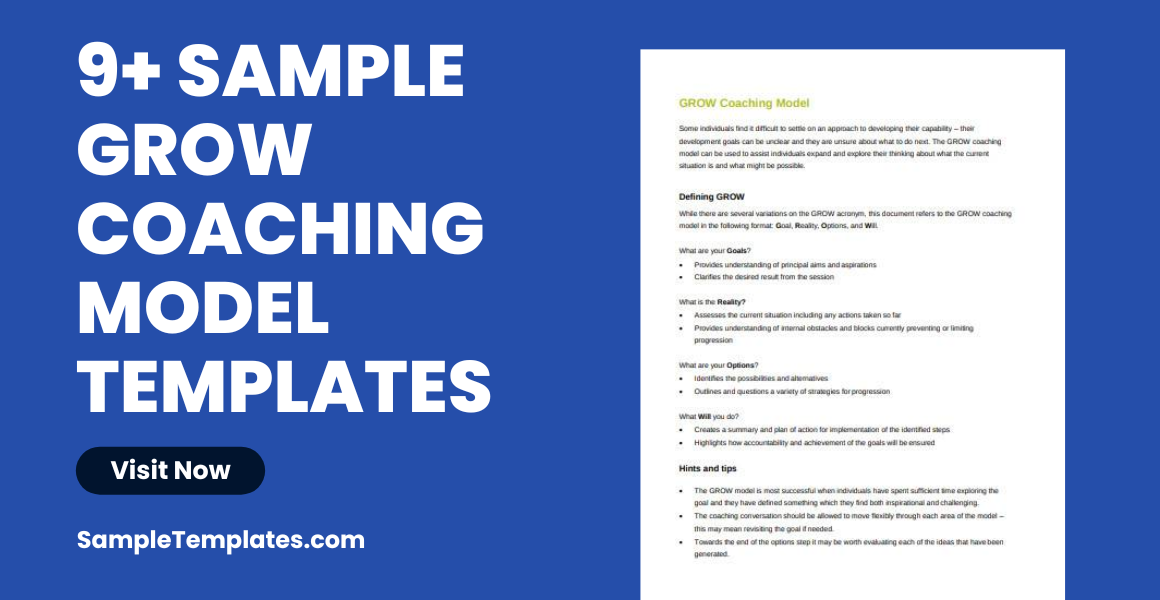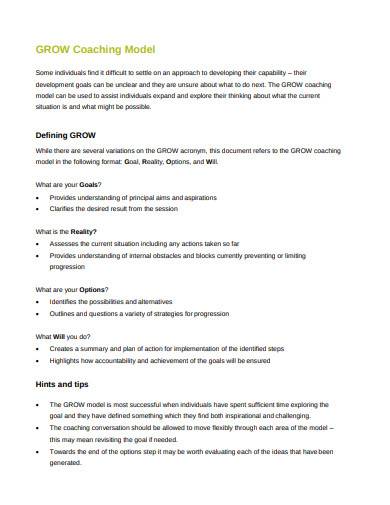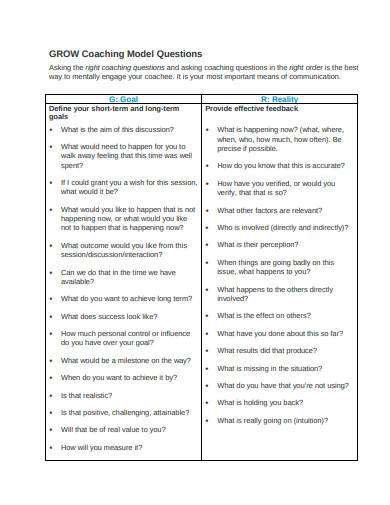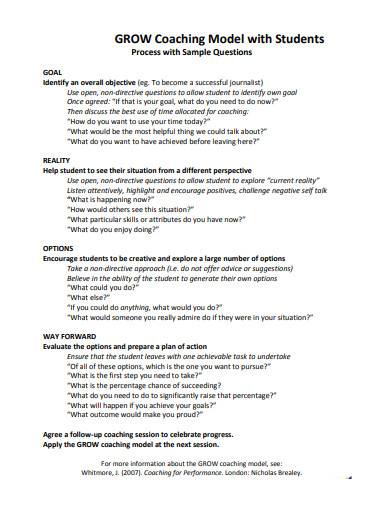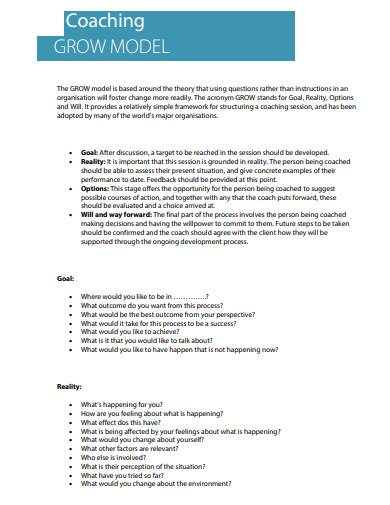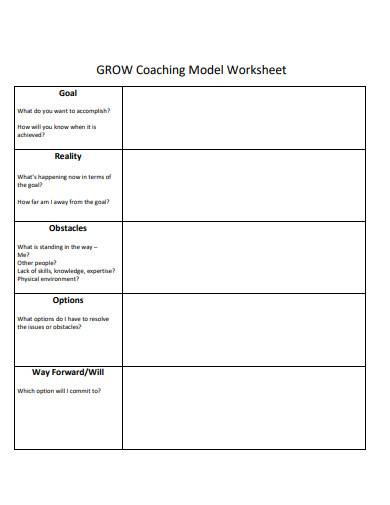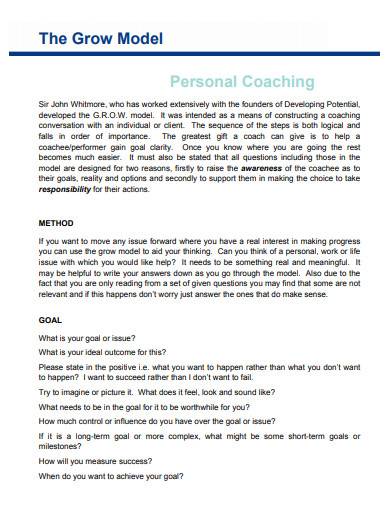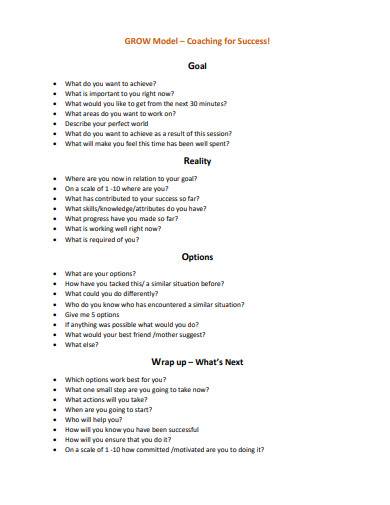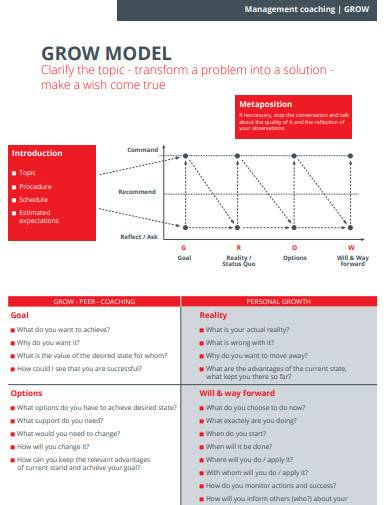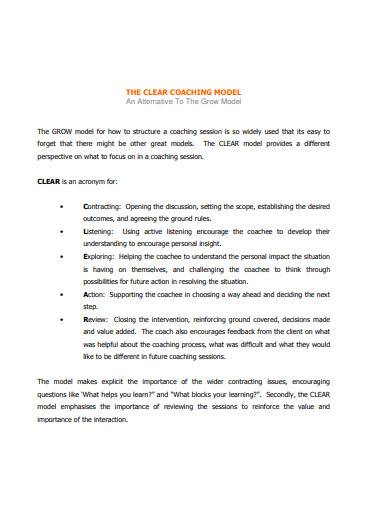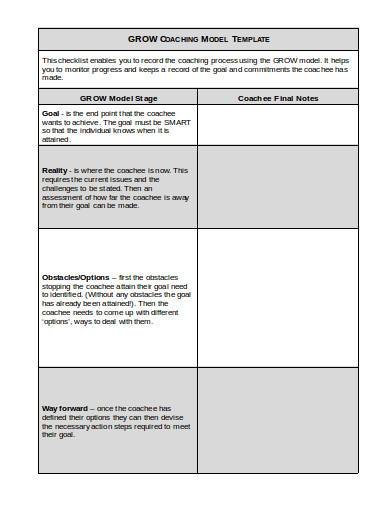Employees perform better when they are monitored. Employers who want to see improvements in the performances of every employee must identify both the employee’s weaknesses and strengths and provide the relevant feedback. In the workplace, it is called coaching. Coaching can be done in many ways, but the most effective coaching model is the GROW coaching model. As a supervisor or manager, it’s necessary to know how the GROW coaching model works and incorporate it into your coaching plan.
What Is a Grow Coaching Model?
The GROW coaching model is an effective coaching method because the coachee (the person who receives coaching) is actively involved in identifying problems (weaknesses or areas they need to improve on) and finding solutions to each problem. Unlike traditional coaching, where the supervisor or manager points out the problem and suggests a solution, the coachee can remember what they need to work on better because of their personal involvement in the coaching process. GROW stands for the four phases of the coaching model, namely, goal, reality, options, and will. The four steps allow a clearly defined result at the end of the provided timeframe. But even if it’s a tried and tested coaching model, the chances of success using the GROW coaching model still depends on how much time and energy is invested in the entire process.
How to Make a Grow Coaching Model
The four phases of the GROW coaching model will serve as your guide on how you should sample plan and start your GROW coaching for your employees. As preparation, you should know how each phase is done and what activities are included in each phase.
1. Goal
You will always have a goal before you start on a journey. Defining your goal is an essential first step because it determines the coaching trajectory. You should have both long-term goals and short-term goals. Long-term goals should cover what you want to achieve as the end result, and short-term goals should be what you want to happen at the end of every coaching session. An effective goal is SMART: Specific, Measurable, Attainable, Realistic, and Timely.
2. Reality
In the second phase of the Goal coaching model, the coachee should become aware of their actual situation. The coach stimulates the self-evaluations so that both he/she and the coachee can identify hurdles, underlying fears, and convictions that are holding back the coachee. Coaches must ask appropriate questions to explore the reality of the coachee. The following are some sample questions:
- Why do you think that this situation/thing is a problem?
- Can you give me a concrete example of the problem?
- What have you done so far, and what went well?
- What is happening to you right now?
- What went wrong?
3. Options
Every problem has a solution, and to get to that solution, you will need to choose from several options. This step will explore how the coachee generates ideas that will help solve the problem. The coach and the coachee can do a brainstorming session to create solutions and evaluate the options that they have. Here are sample questions that will help create options:
- What are the advantages and disadvantages of this option?
- What will you do to reach your goal?
- If this hurdle did not exist, how would you handle the situation?
- What would you do if something (bad/good) happened?
4. Will
The coachee will need to choose one from the generated options and convert it into an action plan. They must commit to this action plan through different means of motivation. The following are sample questions to help motivate or maximize the coachee’s will:
- What steps will you take from here on?
- What steps come after the previous step?
- Do you think this plan can get you to your goal?
- How will you overcome challenges or obstacles?
FREE 10+ GROW Coaching Model Samples in PDF | DOC
1. Basic GROW Coaching Model Template
2. GROW Coaching Model Questions Sample
3. GROW Coaching Model with Students Template
4. Coaching GROW Model Sample
5. GROW Coaching Model Worksheet Template
6. Personal GROW Coaching Model Sample
7. GROW Model Coaching for Success Template
8. GROW Model Management Coaching
9. Clear GROW Coaching Model Sample
10. GROW Coaching Model in DOC
What are the benefits of the GROW coaching model?
As mentioned, the GROW coaching model is a tried and tested method used to structure coaching sessions. Implementing this model enhances workplace culture and aids in talent management facilitation. Workplace culture is important as it helps motivate employees in achieving their goals, which in turn attracts the best members to become part of your team. Because of this continuous coaching program, employers can be aware of the changing goals, as well as the growing talent of their employees. This way, no employee will get left behind.
How can I maximize the use of this coaching model?
To maximize the use of the GROW coaching model, it’s advisable to use a performance tracking software. This will help you gather data on the performance of each employee and keep them in one place for easy viewing. Also, show the benefits of coaching with your employees to help them become motivated and to keep them motivated.
Are there other models similar to the GROW coaching model?
The GROW coaching model is a model for change, and other models for change are the WOOP model and the Transtheoretical Model. WOOP stands for Wish, Outcome, Obstacle, and Plan. It is used to support people in mastering everyday life activities. The Transtheoretical Model (TTM) is used for health behavior change.
Coaching is a two-way communication process, where the coach and coachee exchange learning ideas and experiences with each other. Clear communication is essential for any coaching method to work. So while you put your GROW coaching plan into action, remember that all your efforts will be wasted if you can’t establish good communication with the coachee.
Related Posts
16+ Sample Thank You Letters to Teacher
8+ Sample Seminar Feedback Form
15+ Sample Bakery Business Plan Template
8+ Sample Formal Memo Template
23+ Sample Contract
9+ Simple Contract
8+ Sample Employee Self Evaluation Form
16+ Disco Flyer Template
16+ Sample Investment Agreement
9+ Volunteer Reference Letter Samples
8+ Sample Scrum Master Resumes
7+ Sample Seminar Planning Templates
14+ Learning Contract Template
9+ Sample Event Feedback Form
12+ Observation Checklist Samples
